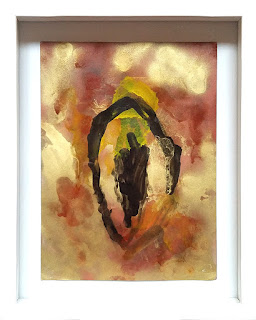Social Performance
Impression Management—A technique used to analyze someone’s performance in social situations, and the effort they make to influence other’s opinions of themselves. It includes the elements of setting, appearance, and manner.
Setting—The environment, such as a home, public space, or vehicle, in which a social action is performed.
Appearance—The clothing, hairstyle, makeup, and accessories that a person uses to create an impression.
Manner—The body language, movements, gestures, and expressions one makes in social communication.
Front stage—In social performance, the space and manner in which a person acts to a public audience.
Backstage—The private space in which a person acts, when alone or toward those with whom they share some intimacy.
The Presentation of Self in Everyday Life—by Ashley Crossman
https://www.thoughtco.com/the-presentation-of-self-in-everyday-life-3026754
In “The Presentation of Self in Everyday Life”, Erving Goffman looked at life itself as an act of social performance, breaking down the actions that people take in social situations into three main elements, what he called Impression Management.
These include: Setting / Appearance / Manner
By looking at social interactions through the language of theatrical performance, Goffman showed how we use these moments to perform our identities. The first element, setting, is constituted by the physical space and objects that are used to perform a social role, the environment and attributes we work with. For example, the workspace of an office is setup to show the differing roles of each employee.
Most of the workers may be situated in the front of the office in cubicles, informal spaces that are easily accessible by others. The manager’s office is usually in the back, making it more difficult to access, and is often more formal in appearance. And, the executives of the company are often set up in a different part of the building, only accessible remotely, or by appointment. The furniture and design of each area work together to demonstrate the hierarchy of roles in the structure of the workplace.
Goffman’s Front Stage and Back Stage Behavior—by Nicki Lisa Cole, Ph.D.
https://www.thoughtco.com/goffmans-front-stage-and-back-stage-behavior-4087971
The element of appearance relates to how a person presents themselves through their choice of clothing, hairstyle, makeup, and accessories. The way in which you dress to go to the gym is different than how you look to go to an interview, or on a date. This points to the differing expectations of each role. Working out at the gym is a more informal practice than interviewing for a job, and so you will dress differently for each of these social occasions. But, each one is still a social performance, a reality which has been highlighted by social media and the ways in which an influencer presents himself or herself to their fans.
Manner refers to the ways in which someone uses body language, movement, gestures, and facial expressions to communicate socially. In his performance, Sometimes Making Something Leads to Nothing (1997), artist Francis Alys pushes a block of ice through the streets of Mexico City, until it completely melts. He uses body language to convince viewers that he is a worker setting out on the mundane task of moving a block of ice. However, as the action progresses, we see the absurdity of his project, as the block of ice melts while he is pushing it through the city streets. In this work of performance art, he is playing the role of a worker to bring across a deeper concept related to life and the meaning of work.
Francis Alys performance, Sometimes Making Something Leads to Nothing (1997)
https://youtu.be/ZedESyQEnMA
This scene from Scarface, in which Al Pacino’s character, Tony Montana, is working at a Miami diner, El Paraiso, can be analyzed using Impression Management. The setting of the tiny kitchen in which Tony works is contrasted with the luxury of the Little Havana club, just across the street. The emphasis shifts to appearance, as Tony and his friend Manny, in their work clothes, take a break to watch the party people leaving the club, dressed in suits and cocktail dresses. Tony’s manner is one of agitation, as he demonstrates his impatience with being a refugee doing menial labor, and expresses his own ambitions for success.
Diner scene from Scarface (1983)
https://youtu.be/pP9qPEHEQTo
In Goffman’s theories on social performance, the terms front stage and backstage are used to describe the level of accessibility that the performer gives to their audience. What that means is that we act differently in private than we do in public. When we are front stage, or in a public setting, we adapt a self-presentation that brings in a heightened awareness of our audience, that is the people we are in social connection with, and our performance is more formal. In private, or backstage settings, we act differently, in a more relaxed or informal way, with those whom we are in more intimate contact with.
We may use the concepts of self-presentation to examine our actions in everyday life, to see how they constitute a social performance. The elements of Impression Management work to communicate ourselves to others, through the elements of setting, appearance, and manner. In this scene from Jorgan Leth’s film 66 Scenes from America (1982), Andy Warhol presents himself through his appearance and manner, as both a subtle critic, and participant in American pop culture.
Andy Warhol eating a hamburger, from 66 Scenes from America (1982)
https://youtu.be/sUd4L1oSXoE






















































